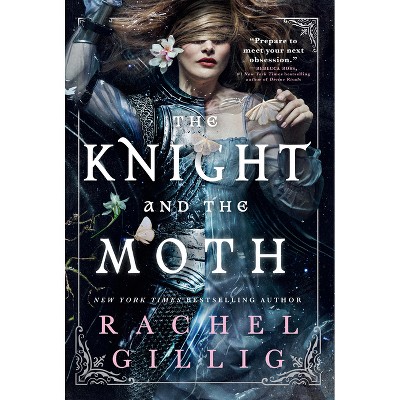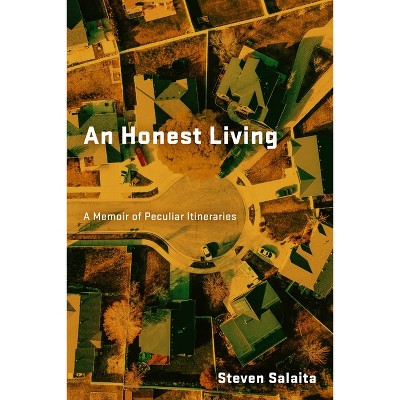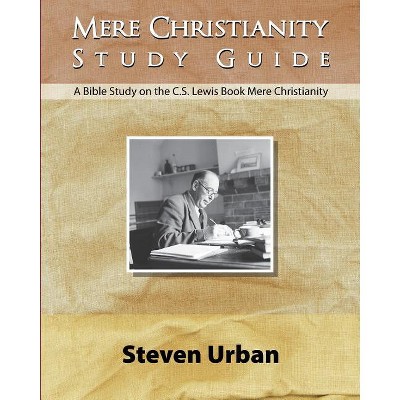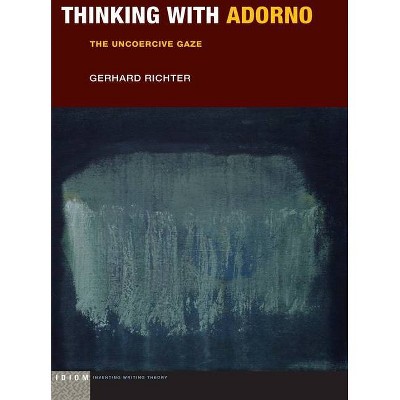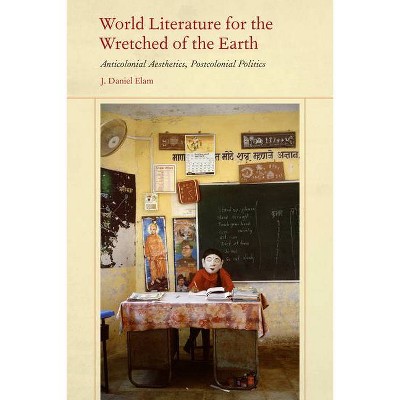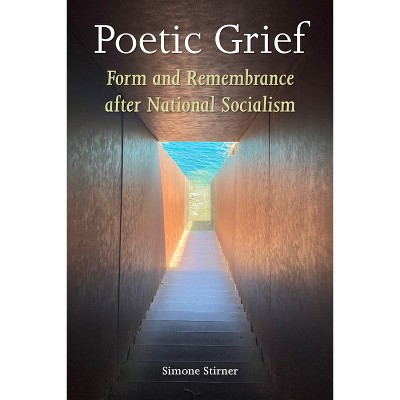Sponsored

Mere Materialism - (Lit Z) by Steven Goldsmith
Pre-order
Sponsored
About this item
Highlights
- Mere Materialism challenges us to recognize a neglected, transhistorical aesthetics of loss.
- About the Author: Steven Goldsmith is Professor Emeritus of English at the University of California, Berkeley.
- 304 Pages
- Literary Criticism, Semiotics & Theory
- Series Name: Lit Z
Description
About the Book
Shows how art and literature can both describe and instantiate the slow, unredeemed violence of physical deterioration.Book Synopsis
Mere Materialism challenges us to recognize a neglected, transhistorical aesthetics of loss. Against the affirmative materialisms prevalent in cultural criticism today, mere materialism in art and literature documents the slow, ordinary violence of routine physical deterioration, including art's own. It inhabits a space where loss can remain nothing but loss, without having to serve any productive or redemptive purpose.
Attending to material surfaces and the processes of attrition Goldsmith examines works from Rembrandt to the present that that stand in counterpoint to the typical materialist emphasis on dynamic, generative possibility. These works turn aside from such future horizons to pose a central question: Amid the urgent purposes we ask art to serve, and amid the many values we invest in the concept of materialism, is it possible for art to occupy the everyday damage of erosion and, on occasion, simply let loss be? Wide-ranging in philosophical reference and in discussions of specific materials, conservation theory, and reception histories, the book draws out the phenomenon of mere materialism through a series of extended case studies: a Rembrandt portrait of Saint Bartholomew; Melville's slave-revolt novella Benito Cereno; a Dada collage by Kurt Schwitters; and recent "gray" writings by Karl Ove Knausgaard and C. S. Giscombe. Together, these works index an aesthetics of fragility and decay, without presupposing that material vulnerability is in a dialectical relationship with deeper meaning, and without assuming that an encounter with it has a redeeming cognitive, affective, political or social function.From the Back Cover
"Mere Materialism is a rare thing that appears every so often, capturing the reader with its intelligence, clarity, and sober lyricism. It is stylistically wondrous and strange, thoughtfully argued, urgent, movingly personal and yet rigorous in its scholarship that spans historical periods, genres, and media."--Jacques Khalip, Brown University
"Goldsmith deepens the concept of 'mere materialism' by bringing it to bear on elemental philosophy and the contemporary concern with climate change and geological perspective. The book deftly bridges disciplinary gaps as it captures the legacies of slavery and resource extraction that inflect the precarity of human existence and embodiment."--Amanda Boetzkes, author of Plastic Capitalism: Contemporary Art and the Drive to Waste Mere Materialism challenges us to recognize a neglected, transhistorical aesthetics of loss. Against the affirmative materialisms prevalent in cultural criticism today, mere materialism in art and literature documents the slow, ordinary violence of routine physical deterioration, including art's own. It inhabits a space where loss can remain nothing but loss, without having to serve any productive or redemptive purpose. Attending to material surfaces and the processes of attrition Goldsmith examines works from Rembrandt to the present that that stand in counterpoint to the typical materialist emphasis on dynamic, generative possibility. These works turn aside from such future horizons to pose a central question: Amid the urgent purposes we ask art to serve, and amid the many values we invest in the concept of materialism, is it possible for art to occupy the everyday damage of erosion and, on occasion, simply let loss be? Wide-ranging in philosophical reference and in discussions of specific materials, conservation theory, and reception histories, the book draws out the phenomenon of mere materialism through a series of extended case studies: a Rembrandt portrait of Saint Bartholomew; Melville's slave-revolt novella Benito Cereno; a Dada collage by Kurt Schwitters; and recent "gray" writings by Karl Ove Knausgaard and C. S. Giscombe. Together, these works index an aesthetics of fragility and decay, without presupposing that material vulnerability is in a dialectical relationship with deeper meaning, and without assuming that an encounter with it has a redeeming cognitive, affective, political or social function. Steven Goldsmith is Professor Emeritus of English at the University of California, Berkeley.Review Quotes
"Mere Materialism is a rare thing that appears every so often, capturing the reader with its intelligence, clarity, and sober lyricism. It is stylistically wondrous and strange, thoughtfully argued, urgent, movingly personal and yet rigorous in its scholarship that spans historical periods, genres, and media."---Jacques Khalip, Brown University
"Goldsmith deepens the concept of 'mere materialism' by bringing it to bear on elemental philosophy and the contemporary concern with climate change and geological perspective. The book deftly bridges disciplinary gaps as it captures the legacies of slavery and resource extraction that inflect the precarity of human existence and embodiment."---Amanda Boetzkes, author of Plastic Capitalism: Contemporary Art and the Drive to Waste
About the Author
Steven Goldsmith is Professor Emeritus of English at the University of California, Berkeley. He is the author of Blake's Agitation: Criticism and the Emotions (Johns Hopkins, 2013) and Unbuilding Jerusalem: Apocalypse and Romantic Representation (Cornell, 1993).Shipping details
Return details
Trending Book Pre-Orders

